Caryn
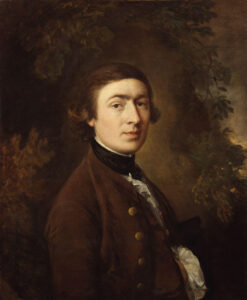 When an artist completes a painting, they really don’t know if it will bring a great price when it is auctioned off or not. They simply put forth their best work, and hope that the buyers see in the painting the same thing that they saw as they painted it. On May 6, 1876, Thomas Gainsborough found himself hoping against hope that he had created a masterpiece. This was going to be his best day ever, because his painting, Duchess of Devonshire, went beyond his greatest expectations when it sold to a London art dealer named William Agnew, for $51,540. It was the highest price ever paid for a painting at auction. My guess is that Gainsborough had a tough time breathing, and an even harder time not passing out as the bids continued to climb.
When an artist completes a painting, they really don’t know if it will bring a great price when it is auctioned off or not. They simply put forth their best work, and hope that the buyers see in the painting the same thing that they saw as they painted it. On May 6, 1876, Thomas Gainsborough found himself hoping against hope that he had created a masterpiece. This was going to be his best day ever, because his painting, Duchess of Devonshire, went beyond his greatest expectations when it sold to a London art dealer named William Agnew, for $51,540. It was the highest price ever paid for a painting at auction. My guess is that Gainsborough had a tough time breathing, and an even harder time not passing out as the bids continued to climb.
Agnew wanted that painting, and when he was triumphant in his quest, he couldn’t wait to display the painting at his gallery. So three weeks later he did just that, and the painting was promptly stolen by Adam Worth. This was not the first theft by Worth. He was quite sneaky and was later dubbed the “Napoleon of Crime” and was the person that Sir Arthur Conan Doyle eventually based Sherlock Holmes’ arch nemesis Dr Moriarty on. He stole the painting with the plan of getting enough money to pay his brother’s bail and get him out of jail. He 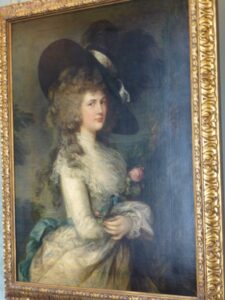 didn’t have the money that was needed for the release. As it turned out, his brother was freed without his help. At that point, Worth decided to keep the painting, even if he would most likely face the consequences.
didn’t have the money that was needed for the release. As it turned out, his brother was freed without his help. At that point, Worth decided to keep the painting, even if he would most likely face the consequences.
Worth “made a name for himself” as the 19th century’s most masterful criminal. Worth was born in Germany, but he was raised in the United States. He joined the Union Army in the Civil War. He was later erroneously reported killed in the Second Battle of Bull Run, but he actually spent the rest of the war hopping from one regiment to another, collecting money to join and then immediately deserting. Even then, he was not a man of integrity, but rather showed his criminal side early on. When the war ended, he made his way to New York, where he joined a gang of pickpockets. He was later convicted of robbery and sentenced to three years at Sing Sing Prison. Sing Sing couldn’t hold him, however, and after just a few weeks, Worth escaped and vowed to be more careful in the future. He began using the alias Henry Raymond and began a lucrative career robbing banks in America before deciding to take his criminal career to Europe. He began a series of perfectly planned heists, as well as a successful forgery operation. Somehow, Worth avoided all violent encounters and actually 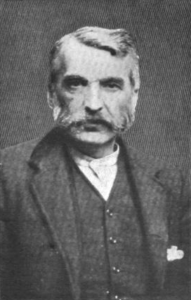 established himself in respectable society…until the heist that would become his downfall…The Duchess of Devonshire. His big mistake came when he failed to financially reward his co-conspirators, Joe Elliot and Junka Phillips. Understandably angered when Worth refused to divulge its whereabouts, the pair went to the police. Worth was sent to prison, on other charges, since the paintings whereabouts could not be determined. Worth spent four years in prison and was released in 1897. After returning to America, he finally had a change of heart and began negotiations with the Pinkerton Detective Agency to obtain a ransom for the painting.
established himself in respectable society…until the heist that would become his downfall…The Duchess of Devonshire. His big mistake came when he failed to financially reward his co-conspirators, Joe Elliot and Junka Phillips. Understandably angered when Worth refused to divulge its whereabouts, the pair went to the police. Worth was sent to prison, on other charges, since the paintings whereabouts could not be determined. Worth spent four years in prison and was released in 1897. After returning to America, he finally had a change of heart and began negotiations with the Pinkerton Detective Agency to obtain a ransom for the painting.
After paying, a relatively small ransom, the Duchess of Devonshire was finally returned to England in 1901. Almost immediately, J P Morgan, Wall Street’s biggest financier, journeyed to England to obtain the painting for himself. Its value undisputed, it is said that Morgan paid as much as $150,000 for it. As for Worth…when he died, just a year later, he was penniless.
 As World War II, was winding down, the Nazis, is typical form were holding high-profile French prisoners of war at Itter Castle in Austria. The Nazis were notorious for their terribly abusive treatment of prisoners. When it became obvious that all was lost, in May 1945, the prison’s guards fled and left Itter Castle waiting for a unit of Waffen-SS police, who were sent in to wipe out the French prisoners and carry out reprisals against the local population for any hints of surrender. It was the Nazi way. When the proof of your war crimes is obvious, remove all evidence, including people, so that no one can tell the gruesome story.
As World War II, was winding down, the Nazis, is typical form were holding high-profile French prisoners of war at Itter Castle in Austria. The Nazis were notorious for their terribly abusive treatment of prisoners. When it became obvious that all was lost, in May 1945, the prison’s guards fled and left Itter Castle waiting for a unit of Waffen-SS police, who were sent in to wipe out the French prisoners and carry out reprisals against the local population for any hints of surrender. It was the Nazi way. When the proof of your war crimes is obvious, remove all evidence, including people, so that no one can tell the gruesome story. 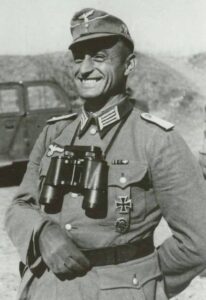
There were, however, some good people in the German Army. One was an officer named Josef “Sepp” Gangl, who opposed the Nazis. Gangl had a small group of men who were loyal to him. Together they intervened to protect the prisoners and locals. Heavily outnumbered, Gangl sent word to the American forces in the area seeking aid. Gangl called for help, and he was answered by Captain John C “Jack” Lee Jr, who arrived with a band of volunteers and a single Sherman tank. It was such a strange group of enemies, who found themselves working together for something that was more important than the war they were in…human lives. Working together were French prisoners, American troops, and Wehrmacht soldiers in an effort to bravely defended the castle against the SS. The French prisoners included former prime ministers, generals, tennis star Jean Borotra, and even Charles de Gaulle’s sister. This, 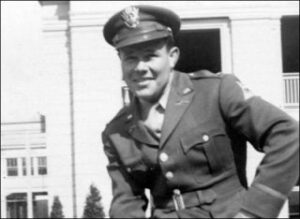 Operation Cowboy, was one of two known times during the war in which Americans and Germans fought side by side. That is such a shocking turn of events, in fact many called it the strangest battle of World War II. Nevertheless, while the tank was blown up, it that made no difference, and in the end, the SS weren’t able to breach the castle. By late afternoon, an American relief force arrived at Itter Castle and captured the SS unit. In the battle, there was only one casualty on the defending side. Sadly, Gangl was slain by a sniper while trying to spot the position of the anti-tank gun from an observation post. He had given his life so that others might live. It was a brave and heroic act.
Operation Cowboy, was one of two known times during the war in which Americans and Germans fought side by side. That is such a shocking turn of events, in fact many called it the strangest battle of World War II. Nevertheless, while the tank was blown up, it that made no difference, and in the end, the SS weren’t able to breach the castle. By late afternoon, an American relief force arrived at Itter Castle and captured the SS unit. In the battle, there was only one casualty on the defending side. Sadly, Gangl was slain by a sniper while trying to spot the position of the anti-tank gun from an observation post. He had given his life so that others might live. It was a brave and heroic act.
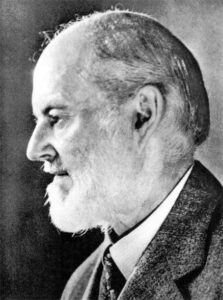 We have all heard of the Rolls Royce, and these days it is a car that is close to my heart, not because I own one, but because I’m pretty sure there are family ties to my son-in-law, Travis Royce and now, my daughter, Amy Royce, and their children, Shai and Caalab. I don’t know that for sure, but I have a hunch, and it’s not just the name. Time will tell as I research further.
We have all heard of the Rolls Royce, and these days it is a car that is close to my heart, not because I own one, but because I’m pretty sure there are family ties to my son-in-law, Travis Royce and now, my daughter, Amy Royce, and their children, Shai and Caalab. I don’t know that for sure, but I have a hunch, and it’s not just the name. Time will tell as I research further.
Sir Frederick Henry Royce, 1st Baronet, OBE, was an English engineer. OBE stands for “The Most Excellent Order of the British Empire and is a British order of chivalry, rewarding contributions to the arts and sciences, work with charitable and welfare organizations, and public service outside the civil service.” Sir Royce was famous for his designs of car and aeroplane engines with a reputation for reliability and longevity. Of course, we probably know much more about the product that brought him fame, than we do the man and his partners, who brought that product to life.
Sir Frederick Henry Royce was born in Alwalton, Huntingdonshire, near Peterborough on March 27, 1863, to James and Mary Royce (née King). He was youngest of their five children. His father ran a flour mill which he leased from the Ecclesiastical Commissioners. Unfortunately, the business failed, and the family moved to London. After his father died in 1872, Royce had to go out to work selling newspapers and delivering telegrams after only one year of formal schooling. With such a beginning, it would seem quite unlikely that Sir Royce would ever amount to anything, but in 1878 with the financial help of an aunt, Royce  was able to start an apprenticeship with the Great Northern Railway company at its works in Peterborough. Unfortunately, the money ran out after three years, and Royce was again forced to change careers. He worked for a short time with a tool-making company in Leeds, and then returned to London and joined the Electric Light and Power Company. In 1882, he moved to their Liverpool office and began working on street and theatre lighting.
was able to start an apprenticeship with the Great Northern Railway company at its works in Peterborough. Unfortunately, the money ran out after three years, and Royce was again forced to change careers. He worked for a short time with a tool-making company in Leeds, and then returned to London and joined the Electric Light and Power Company. In 1882, he moved to their Liverpool office and began working on street and theatre lighting.
Following a few other ventures that produced minimal success, Royce partnered with Charles Rolls (1877–1910) and Claude Johnson (1864–1926) and founded Rolls-Royce. The new company initially focused on large 40-50 horsepower motor cars, the Silver Ghost and its successors. Royce produced his first aero engine shortly after the outbreak of the First World War and aircraft engines became Rolls-Royce’s principal product. While the Rolls Royce aeroplane engine was a much-needed product during the war, it will always be the famous Rolls Royce automobiles that people will remember. They are beautifully elegant, and to be desired by those who have the means to afford them, as well as those who wish they could afford them.

Henry Royce married Minnie Punt in 1893, but they had no children. The couple separated in 1912. Royce, who lived by the motto “Whatever is rightly done, however humble, is noble,” was appointed OBE in 1918, and was created a baronet, of Seaton in the County of Rutland, in 1930 for his services to British Aviation. Sir Royce’s health began to fail him in 1911 and he was finally forced to leave his factory in the Midlands at Derby. He took a team of designers and moved to the south of England, while spending winters in the south of France. He died at his home in Sussex on April 22, 1933. With no children, the baronetcy became extinct on his death.

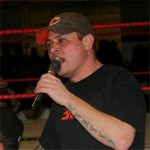 My son-in-law, Travis Royce is skilled at a number of things. He worked for a number of years at a radio station in Casper, Wyoming, and the commercials he did there, were so good that they still use some of them today…8 years after he moved to Washington state. We are always laughing when we hear one of the ads these days, because we know how long it has been since he worked there. One time my sister, Alena Stevens heard one of his ads, and called me to “discreetly” ask if he had moved back, without my daughter, Amy Royce, who is his wife. We all got a really good laugh over that one, since they had been married 25 years at the time, and almost 28 now, so Travis wouldn’t move anywhere without Amy.
My son-in-law, Travis Royce is skilled at a number of things. He worked for a number of years at a radio station in Casper, Wyoming, and the commercials he did there, were so good that they still use some of them today…8 years after he moved to Washington state. We are always laughing when we hear one of the ads these days, because we know how long it has been since he worked there. One time my sister, Alena Stevens heard one of his ads, and called me to “discreetly” ask if he had moved back, without my daughter, Amy Royce, who is his wife. We all got a really good laugh over that one, since they had been married 25 years at the time, and almost 28 now, so Travis wouldn’t move anywhere without Amy.
Travis’ latest venture is building furniture. He is really good at it, and I would go so far as to say that he’s a natural. I think he would also be very good at refurbishing furniture too. Travis is just getting started in that 
 business, but he enjoys it very much, and on the plus side, he likes working from home, now that Amy also works from home. Travis and Amy love spending their time together and on their off hours, love being out in their back yard, which they have fixed up beautifully. It is an ongoing project that is very dear to their hearts.
business, but he enjoys it very much, and on the plus side, he likes working from home, now that Amy also works from home. Travis and Amy love spending their time together and on their off hours, love being out in their back yard, which they have fixed up beautifully. It is an ongoing project that is very dear to their hearts.
When Travis and Amy bought their house, a riding lawnmower came with it for the large yard. Recently that lawnmower died, and they had to buy a new mower. The old mower was a red Scotts riding mower, but now, they are the proud owners of a John Deere. It is a beauty of a machine, and for a mowing fanatic like Travis, it is a big step up. Everyone knows that John Deere is the Cadillac of farm, ranch, and yard equipment, so now 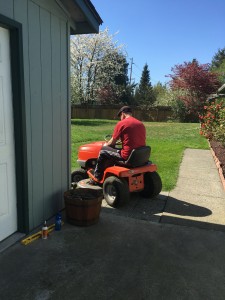
 Travis can honestly say that he owns the Cadillac of tractors. Now that the weather is warming up, Amy will know where to find Travis, because he is either in the back yard enjoying the day, or in the yard mowing…if he’s not working, that is. Travis has always loved mowing, and he even mowed our yard in Casper, before they got a house of their own, so he had his own yard to mow. We sure missed having him mow our yard back then. My husband, Bob, Travis’ father-in-law, would much rather work on a car than do yard work, so it was nice to have a mowing fanatic in the family, and we sure do miss it now that they live so far away. Travis, you’re welcome to mow here anytime you want to. Today is Travis birthday. Happy birthday Travis!! Have a great day!! We love you!!
Travis can honestly say that he owns the Cadillac of tractors. Now that the weather is warming up, Amy will know where to find Travis, because he is either in the back yard enjoying the day, or in the yard mowing…if he’s not working, that is. Travis has always loved mowing, and he even mowed our yard in Casper, before they got a house of their own, so he had his own yard to mow. We sure missed having him mow our yard back then. My husband, Bob, Travis’ father-in-law, would much rather work on a car than do yard work, so it was nice to have a mowing fanatic in the family, and we sure do miss it now that they live so far away. Travis, you’re welcome to mow here anytime you want to. Today is Travis birthday. Happy birthday Travis!! Have a great day!! We love you!!
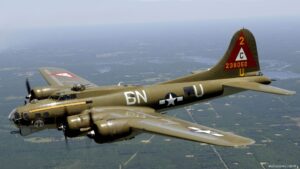 When the airmen went off to war, their hope was that their plane would be able to stand up to the attacks that would be coming their way. In World War II, big war planes were very new. The men who spent the war in them, needed a plane that would take a hit and keep on flying. They would love to have a flying suit of armor, but it also had to be able to fly. A plane that was too heavy, obviously wouldn’t fly, and yet, they needed a plane that could get hit with shrapnel or bullets and still stay in the air. They knew that they couldn’t make sure that every plane that was hit would make it home, but they needed as many as possible to do just that.
When the airmen went off to war, their hope was that their plane would be able to stand up to the attacks that would be coming their way. In World War II, big war planes were very new. The men who spent the war in them, needed a plane that would take a hit and keep on flying. They would love to have a flying suit of armor, but it also had to be able to fly. A plane that was too heavy, obviously wouldn’t fly, and yet, they needed a plane that could get hit with shrapnel or bullets and still stay in the air. They knew that they couldn’t make sure that every plane that was hit would make it home, but they needed as many as possible to do just that.
There were a number of planes that were considered almost indestructible, or at least as indestructible as it is possible to be for an airplane in a war zone. Two of them…the Boeing B-17 Flying Fortress, a four-engined heavy bomber developed in the 1930s for the United States Army Air Corps (USAAC), and the Boeing B-29 Superfortress, a US 4-engine propeller bomber, manufactured from 1943 to 1946 and used throughout the Korean War, as well as World War II. The name “Fortress” was coined when B-17, with its heavy firepower and multiple machine gun emplacements, made its public debut in July 1935. A reporter for The Seattle Times, Richard Williams, exclaimed, “Why, it’s a flying fortress!” The Boeing Company saw the value of that name and immediately had it trademarked. The truth of the matter is, however, that the planes had the ability to take a hit and still bring their boys home most of the time, provided the damage wasn’t too heavy.
These heavy bombers are bomber aircraft capable of delivering the largest payload of bombs, as well as the longest range, which is takeoff to landing distance, of their era. For those reasons, the heavy bombers are  usually among the largest and most powerful military aircraft at any point in time. Nevertheless, as the 20th century wound down, the heavy bombers were largely superseded by strategic bombers. The strategic bombers were often smaller in size, which allowed for much longer ranges and by necessity, these were capable of delivering nuclear bombs. It was a sign of the times, but for all World War II buffs, like me, it was a sad end of an era. The newer planes are great, don’t get me wrong, but they just don’t have the presence, at least in my mind, that the World War II heavy bombers did. Those old planes had a grace that the newer stuff simply doesn’t have. I suppose that my love of the B-17, at least, stems from the fact that it was the plane that brought my dad home safely…so he could become my dad.
usually among the largest and most powerful military aircraft at any point in time. Nevertheless, as the 20th century wound down, the heavy bombers were largely superseded by strategic bombers. The strategic bombers were often smaller in size, which allowed for much longer ranges and by necessity, these were capable of delivering nuclear bombs. It was a sign of the times, but for all World War II buffs, like me, it was a sad end of an era. The newer planes are great, don’t get me wrong, but they just don’t have the presence, at least in my mind, that the World War II heavy bombers did. Those old planes had a grace that the newer stuff simply doesn’t have. I suppose that my love of the B-17, at least, stems from the fact that it was the plane that brought my dad home safely…so he could become my dad.
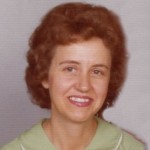
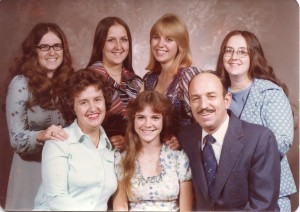 There are a number of traditions surrounding May Dad, and the one I think I most prefer is that it is the albeit “unofficial” beginning of Summer. I’m sure that we all know that Summer really begins on June 21st, but by the first day of May, the weather usually begins to warm up, and therefore it leaves all of us “warmth starved” Summer people feeling just a little bit better. My mom, Collene Spencer loved May Day. I think it was almost her favorite day, and she was
There are a number of traditions surrounding May Dad, and the one I think I most prefer is that it is the albeit “unofficial” beginning of Summer. I’m sure that we all know that Summer really begins on June 21st, but by the first day of May, the weather usually begins to warm up, and therefore it leaves all of us “warmth starved” Summer people feeling just a little bit better. My mom, Collene Spencer loved May Day. I think it was almost her favorite day, and she was 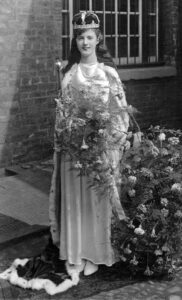 definitely one of those “warmth starved” people, as anyone who knew her very well could tell you. Mom was never comfortable in the cold of Winter, and she would finally start to feel warm when the temperature inside and outside reached about 90°. That usually meant that anyone in her house was on the verge of becoming “baked goods.”
definitely one of those “warmth starved” people, as anyone who knew her very well could tell you. Mom was never comfortable in the cold of Winter, and she would finally start to feel warm when the temperature inside and outside reached about 90°. That usually meant that anyone in her house was on the verge of becoming “baked goods.”
Mom always went all out for May Day, and I think the neighbors got to where they expected it. It just wasn’t May Day or May 1st, for that matter, until the Spencer girls made the traditional “May Basket Delivery Run” around the neighborhood. Mom would buy candy, and construction paper, and we would make the baskets ourselves. Then we would full them with candy…just enough for a couple or a small family to have a couple of pieces. Then, we went around the neighborhood, hanging them on the door, then running to hide. The recipient was then supposed try to find us. The goal was not to get caught, and we 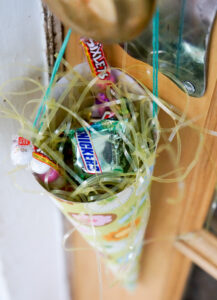
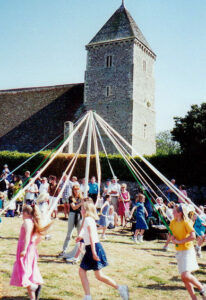 had a great time trying. In our neighborhood anyway, my mom was always the May Day Queen.
had a great time trying. In our neighborhood anyway, my mom was always the May Day Queen.
In some parts of the United States, while May baskets are a big part of the May Day tradition, the day can also include activities like a Maypole Dance and crowning a Queen of May. I suppose that in a town where the town government supported the day, such traditions as these would be feasible. It might be fun to have that much participation in the holiday, but sadly, it is quickly becoming a holiday of the past in most places. I suppose it as something that was more from my mother’s era than this one. Those kinds of acts just aren’t common these days…sadly.
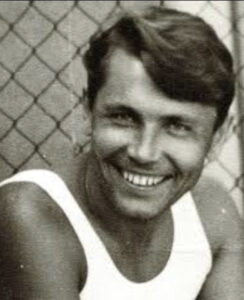 We have heard of people taking care of their medical needs before. Some have stitched themselves, and others have removed a bullet or other such object. Some have even performed surgery on themselves, although that sound a little bit like insanity to me. Nevertheless, if it comes down to perform surgery on yourself or die, I guess the logical choice would be to perform the surgery on yourself, if you had any idea what you were doing. A medic, Robert Kerr “Jock” McLaren, who was a veterinarian by trade, took out his own appendix during his service with the Second Australian Imperial Force, in order to save his own life. So, McLaren set about to remove his own appendix…in the jungle, with a pen knife, two spoons, and coconut fibers. That was an amazing thing, but it happened in 1944 and he even had no anesthetic. It is shocking, but he would not be the last one to do that.
We have heard of people taking care of their medical needs before. Some have stitched themselves, and others have removed a bullet or other such object. Some have even performed surgery on themselves, although that sound a little bit like insanity to me. Nevertheless, if it comes down to perform surgery on yourself or die, I guess the logical choice would be to perform the surgery on yourself, if you had any idea what you were doing. A medic, Robert Kerr “Jock” McLaren, who was a veterinarian by trade, took out his own appendix during his service with the Second Australian Imperial Force, in order to save his own life. So, McLaren set about to remove his own appendix…in the jungle, with a pen knife, two spoons, and coconut fibers. That was an amazing thing, but it happened in 1944 and he even had no anesthetic. It is shocking, but he would not be the last one to do that.
As research groups began spending time in Antartica, several have found that they have suddenly needed medical care and there was no one there to do it, but them. One female doctor had to perform a biopsy on herself, which while it was a serious situation, was not a procedure to the degree of an appendectomy. Then on April 30, 1961, Dr. Leonid Rogozov, who was a Soviet 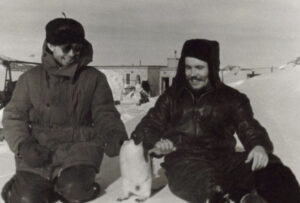 surgeon, found himself stranded in Antarctica, and in need of an appendectomy. Dr Rogozov was a Soviet general practitioner. He took part in the sixth Soviet Antarctic Expedition in 1960–1961, and unfortunately for him, he was the only doctor stationed at the Novolazarevskaya Station at that time. While he was there, he developed appendicitis. It was not something that could wait, as it was a serious attack, so he had to perform the appendectomy on himself.
surgeon, found himself stranded in Antarctica, and in need of an appendectomy. Dr Rogozov was a Soviet general practitioner. He took part in the sixth Soviet Antarctic Expedition in 1960–1961, and unfortunately for him, he was the only doctor stationed at the Novolazarevskaya Station at that time. While he was there, he developed appendicitis. It was not something that could wait, as it was a serious attack, so he had to perform the appendectomy on himself.
The station was newly constructed, and the 12 men inside were cut off from the outside world by the polar winter by March of that year. When the polar winter sets in, planes and ships cannot get into the area, for any reason. The symptoms began on the morning of 29 April 1961. At first they were mild, with Rogozov experiencing general weakness, nausea, and moderate fever, but later pain in the lower right portion of the 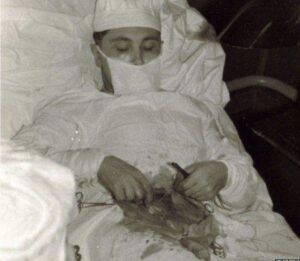 abdomen started to become more severe. His symptoms were classic, and he knew that he had acute appendicitis. The British Medical Journal reported, “He knew that if he was to survive, he had to undergo an operation, but he was in the frontier conditions of a newly founded Antarctic colony on the brink of the polar night. Transportation was impossible. Flying was out of the question, because of the snowstorms. And there was one further problem: he was the only physician on the base.” Self surgery was his only solution.
abdomen started to become more severe. His symptoms were classic, and he knew that he had acute appendicitis. The British Medical Journal reported, “He knew that if he was to survive, he had to undergo an operation, but he was in the frontier conditions of a newly founded Antarctic colony on the brink of the polar night. Transportation was impossible. Flying was out of the question, because of the snowstorms. And there was one further problem: he was the only physician on the base.” Self surgery was his only solution.
Being a logical man, Rogozov wrote in his diary, “It seems that I have appendicitis. I am keeping quiet about it, even smiling. Why frighten my friends? Who could be of help? A polar explorer’s only encounter with medicine is likely to have been in a dentist’s chair.”

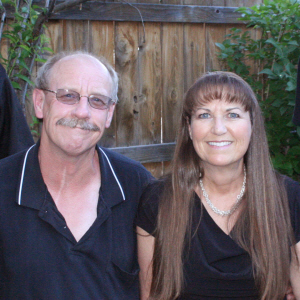 Story by guest writer, Corrie Petersen
Story by guest writer, Corrie Petersen
Today is a special day for a special person in my life. My mom’s birthday is today, and I am so grateful for all the things she has done in my life for me and everyone else. She is such a caring person, and she is a Godly woman. She has taught me to believe in God and trust in Him because He will make all things come to pass.
As of today, she has four grandchildren and three great-grandchildren with two more great-grandchildren on the way. She loves spending time with all of us and she does all she can to make sure she does just that even though two of her grandchildren and her other daughter, my sister, Amy, and her husband Travis live in Washington State. She loves to visit them in Washington and she and my dad are planning a trip to see them next year.


The past six years have been a roller coaster of events. From me starting college for a nursing degree to all the great-grandchildren that have come along. We’ve experienced some not-so-fun things as well including a death in the family and my dad had a heart attack, but the good thing is that God helped us through each of those days. I know she has helped my family when I was not able to be there for them due to school. Nursing school takes a lot of time, energy, and dedication and during that time, she helped my family in so many ways that I don’t know how to thank her for what she did for them.
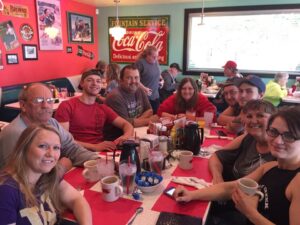
 My mom has been retired for a little while now and I am positive she and my dad love the retired life they are living. They love to travel and hike while on the way. They bowl together, they hike together, and they go to family events together and they would not have it any other way because they love being together.
My mom has been retired for a little while now and I am positive she and my dad love the retired life they are living. They love to travel and hike while on the way. They bowl together, they hike together, and they go to family events together and they would not have it any other way because they love being together.
Today is my mom’s birthday. Mom, I hope you have a wonderful day. I love you so much.

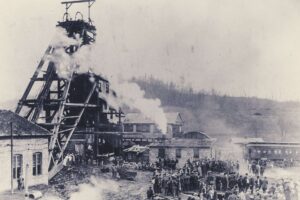 If you lived in Eccles, West Virginia in 1914, you or someone in your family most likely worked at the Eccles Mine Number 5. Eccles was a tiny town in Raleigh County. Mine number 5 was opened in 1905, and by 1914, the mine employed most of the local men and even the teenagers. Life was mundane for the most part. Not much happened in the town, and April 28, 1914 promised to be just another boring day. On that Tuesday morning, dozens of local men and teens left their homes to go to work at the Eccles Mine Number 5, which was one of group of coal mines in West Virginia owned by the New River Colliers Company. Everything was going along fine, when suddenly, at 2:30pm, a sudden explosion rocked the Number 5 mine. In an instant, more than 180 workers who had left home as usual that day, would never go home again.
If you lived in Eccles, West Virginia in 1914, you or someone in your family most likely worked at the Eccles Mine Number 5. Eccles was a tiny town in Raleigh County. Mine number 5 was opened in 1905, and by 1914, the mine employed most of the local men and even the teenagers. Life was mundane for the most part. Not much happened in the town, and April 28, 1914 promised to be just another boring day. On that Tuesday morning, dozens of local men and teens left their homes to go to work at the Eccles Mine Number 5, which was one of group of coal mines in West Virginia owned by the New River Colliers Company. Everything was going along fine, when suddenly, at 2:30pm, a sudden explosion rocked the Number 5 mine. In an instant, more than 180 workers who had left home as usual that day, would never go home again.
The explosion was caused by coal-seam methane. At least 180 men lay dead, at least that was the death roll published as of 2011 by the National Coal Heritage Trail. A monument at the cemetery lists 183 victims, and  the records of the county coroner list 186. When the mine was rocked by a series of violent explosions, parts of the mine collapsed while other parts were heavily damaged, which trapped the miners inside. Of course, the people of Eccles and officials from the mining company rushed to the scene to aid the rescue efforts. Despite their best efforts, it was soon obvious that this would be a recovery effort, and not a rescue. That day, all of the miners in Eccles Mine Number 5 were killed, including five who were under the age of 14 years of age. In addition, nine workers in a nearby mine were killed when deadly gas from Mine Number 5 seeped into their mine. Ironically, one of the men who died in the nearby mine, was an insurance agent from Charleston, West Virginia, who had only gone into the mine to solicit business from the men. He was only there for a few minutes. It was there that the salesman, who had unfortunately chosen that day to visit the mine and sell insurance to its workers, was also killed. The blast and the subsequent damage to the mine, left many of the victim so mangled and torn apart, that most of them could not be positively identified because of their horrific injuries.
the records of the county coroner list 186. When the mine was rocked by a series of violent explosions, parts of the mine collapsed while other parts were heavily damaged, which trapped the miners inside. Of course, the people of Eccles and officials from the mining company rushed to the scene to aid the rescue efforts. Despite their best efforts, it was soon obvious that this would be a recovery effort, and not a rescue. That day, all of the miners in Eccles Mine Number 5 were killed, including five who were under the age of 14 years of age. In addition, nine workers in a nearby mine were killed when deadly gas from Mine Number 5 seeped into their mine. Ironically, one of the men who died in the nearby mine, was an insurance agent from Charleston, West Virginia, who had only gone into the mine to solicit business from the men. He was only there for a few minutes. It was there that the salesman, who had unfortunately chosen that day to visit the mine and sell insurance to its workers, was also killed. The blast and the subsequent damage to the mine, left many of the victim so mangled and torn apart, that most of them could not be positively identified because of their horrific injuries.
In the early 1900s, coal was in great demand. Production in the United States had increased from 50 million tons of coal in 1850 to 250 million tons of coal in 1903. Unfortunately, the increasing demand and the rush to supply, brought with it worsening work conditions. The danger occurred when the men were digging for coal in deep mines, in which chambers of gas lay just underneath. That meant that highly explosive gasses could come into contact with carbide headlamps. The next thing they knew, they had an explosion on their hands. The mine 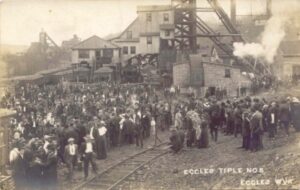
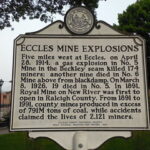 disaster brought attention to an overall safety problem in the West Virginia mining industry. Sadly…at least in that it didn’t happen sooner, the disaster actually aided the unions’ attempts to improve the workers’ conditions. The labor union helped to ban carbide headlamps in West Virginia. It was suspected that the headlamps were most likely the cause of the Eccles explosion, as well as a second mine explosion 18 years later in Illinois.
disaster brought attention to an overall safety problem in the West Virginia mining industry. Sadly…at least in that it didn’t happen sooner, the disaster actually aided the unions’ attempts to improve the workers’ conditions. The labor union helped to ban carbide headlamps in West Virginia. It was suspected that the headlamps were most likely the cause of the Eccles explosion, as well as a second mine explosion 18 years later in Illinois.
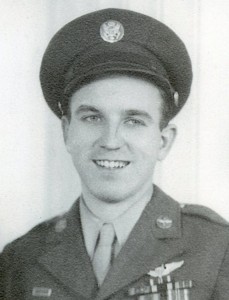
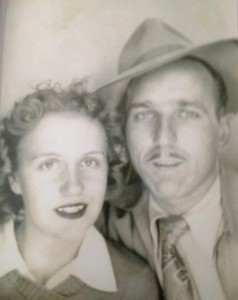 I have been studying a lot lately about World War II. It is my “favorite” war…if one can have a favorite war. My dad, Allen Spencer was a Staff Sergeant in World War II. He served as flight engineer and top turret gunner on a B-17G, the flying fortress. The more I study World War II, the more I realize just how dangerous was…no matter what branch of the service a soldier was in. Dad’s family was one that didn’t have to suffer the loss of their soldier, because my dad came home after the war. He was the only one in his family that saw action in World War II, other than his half-brother, Norman Spencer. Dad’s older brother, Bill tried to serve, but due to flat feet and a hernia, he was turned down. My Uncle Bill was devastated by the rejection. My dad was his little brother, and he had always felt a need to protect him, not because Dad was accident prone or anything, but because he was his little brother. Now, he was going to have to let Dad go without the “backup” that Uncle Bill had hoped to provide. That was one of the hardest things my Uncle Bill ever had to do. So, Dad went with angel backup instead…and his mother’s prayers.
I have been studying a lot lately about World War II. It is my “favorite” war…if one can have a favorite war. My dad, Allen Spencer was a Staff Sergeant in World War II. He served as flight engineer and top turret gunner on a B-17G, the flying fortress. The more I study World War II, the more I realize just how dangerous was…no matter what branch of the service a soldier was in. Dad’s family was one that didn’t have to suffer the loss of their soldier, because my dad came home after the war. He was the only one in his family that saw action in World War II, other than his half-brother, Norman Spencer. Dad’s older brother, Bill tried to serve, but due to flat feet and a hernia, he was turned down. My Uncle Bill was devastated by the rejection. My dad was his little brother, and he had always felt a need to protect him, not because Dad was accident prone or anything, but because he was his little brother. Now, he was going to have to let Dad go without the “backup” that Uncle Bill had hoped to provide. That was one of the hardest things my Uncle Bill ever had to do. So, Dad went with angel backup instead…and his mother’s prayers.
Dad served and returned home to his family, and because he did, my sisters and I, and our whole family exists. 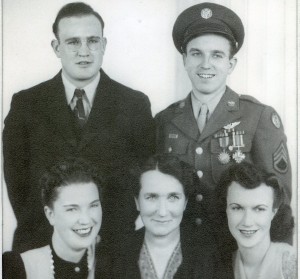
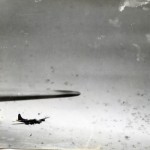 Dad, like many of the soldiers in that generation, never spoke of his time in the service during World War II, and all we knew was what little we heard from his family, and a couple of newspaper articles. Knowing my dad as we did, those years were his duty, but never his desire. Dad was a gentle man, and the idea of killing must have weighed heavily on him. Nevertheless, he knew it was his duty, and he would never have shirked his duty. There were a number of heroic times in Dad’s time in the service. He actually saved his crew, when he cranked down the landing gear just in time to hit the runway. It must have been damaged by the anti-aircraft flak, because it wouldn’t come down. There were other times that his actions saved his crew, such as the enemy planes that he shot down. They were a good team. They were all heroes…every single one.
Dad, like many of the soldiers in that generation, never spoke of his time in the service during World War II, and all we knew was what little we heard from his family, and a couple of newspaper articles. Knowing my dad as we did, those years were his duty, but never his desire. Dad was a gentle man, and the idea of killing must have weighed heavily on him. Nevertheless, he knew it was his duty, and he would never have shirked his duty. There were a number of heroic times in Dad’s time in the service. He actually saved his crew, when he cranked down the landing gear just in time to hit the runway. It must have been damaged by the anti-aircraft flak, because it wouldn’t come down. There were other times that his actions saved his crew, such as the enemy planes that he shot down. They were a good team. They were all heroes…every single one.
While my dad was a hero during World War II, I will always consider his most important accomplishment, his family. Without my dad’s safe return from the war, we would not exist. He met my mom, Collene Byer Spencer when she was still a schoolgirl, but even then, they knew it was that forever love. They married in 1953, an 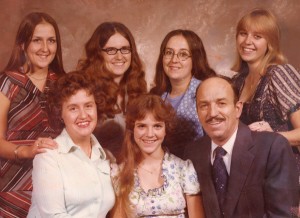
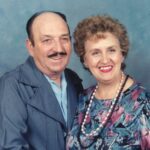 became the parents of five daughters, Cheryl, Masterson, Caryn Schulenberg (me), Caryl Reed, Alena Stevens, and Allyn Hadlock. They went on to have grandchildren and great grandchildren…all of whom owe their lives to the fact that dad came home from war. For that I praise God, and I give Him all the glory. Today would have been my dad’s 99th birthday. Happy birthday in Heaven, Dad. We love and miss you very much and look forward to seeing you again when we get to Heaven.
became the parents of five daughters, Cheryl, Masterson, Caryn Schulenberg (me), Caryl Reed, Alena Stevens, and Allyn Hadlock. They went on to have grandchildren and great grandchildren…all of whom owe their lives to the fact that dad came home from war. For that I praise God, and I give Him all the glory. Today would have been my dad’s 99th birthday. Happy birthday in Heaven, Dad. We love and miss you very much and look forward to seeing you again when we get to Heaven.

